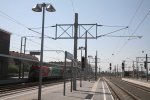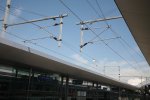So I was sitting on platforms 13/14 a Manchester Piccadilly idlely gazing at the OLE uprights, Spans and fixings.
It struck me that some of these along with much of the WCML stuff must be getting on for 40 or so years old and some of them seem to be a bit scabby.
What sort of life span do these things have and have we seen a renewal program of BR era OLE stanchions etc?
It struck me that some of these along with much of the WCML stuff must be getting on for 40 or so years old and some of them seem to be a bit scabby.
What sort of life span do these things have and have we seen a renewal program of BR era OLE stanchions etc?



